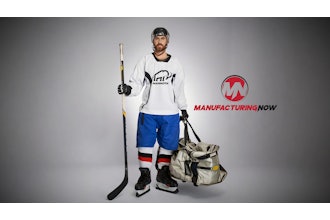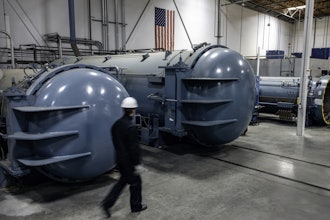While mechanical seals have become more prevalent as a method of sealing of rotating pumping equipment, there are still plenty of pumps centrifugal, rotary, turbine and reciprocating that use compression packing as the sealing method of choice. You'll find these pumps in every process industry, from pulp and paper, water treatment and power plants to food processing.
When compression packing fails, the consequences can be devastating. Packing failure can cause pump damage, pump failure and unscheduled plant shutdowns, not to mention the cleanup effort. Considering the potential cost impact, keeping compression packing functioning properly may well be the most critical factor ensuring that the pump keeps working.
The first key to guard against packing failure is to first select the proper packing. Check to see that your packing meets the operating parameters of the system into which it will be installed. Confirm packing temperature ranges, shaft-speed capabilities and fluid compatibility. Next, check packing samples to make sure they are easy to work with and to install. Some packings are too rigid, hard to cut or need to be stretched or rolled prior to installation. What you should have is a flexible, easy-to-cut, consistently braided packing with a uniform packing width.
While you're confirming ease of installation, don't forget ease of removal. Avoid packings that harden, leave residue or tend to score shaft sleeves. Always use a packing that is non-hardening, non-abrasive, and is as easy to remove as it is to install.
Durability is key, too. Make sure that the packing you choose is strong and long-lasting. And don't automatically choose the lowest-cost alternative. Remember that the cost of the packing is insignificant compared to the cost of repacking the pump or facing a packing failure. The packing itself represents only 3% of the total cost of repacking a pump, so the real savings gained by a longer-running pump are many times greater than the cost of the original packing.
Compression packings are made from many different materials and combinations of materials, each offering its own set of properties. The performance of any packing is a direct result of these combinations of properties. Not all PTFE (polytetrafluoroethylene) materials, for example, have the same properties. Because frictional heat buildup is a leading cause of packing failure, it's important to ensure that your packing will run cool, even after extended periods of continuous operation.
To predict how a packing will work, it is not enough to focus on a single performance attribute. Conformability, lubricity, low coefficient of expansion, braid construction, low abrasiveness, ease of installation all of these factors can impact the ultimate performance of the packing. Also, be aware that packing manufacturers often mix a number of materials in their braided packing to achieve a particular attribute. While one attribute may be enhanced, another may be diminished. Examine each material ingredient to determine the weakest link, and match your application parameters with the packing operating specifications. Factors to check include temperature, shaft operating speeds and pH ranges. Some PTFE packings consist of pure PTFE with a thermally conductive layer. The design is much like a wire: a thermally conductive interior of pure PTFE surrounded by an insulator. Ultimately, the best indicator of pump-packing performance is time-in-service. So don't be shy about asking for documentation on the durability of any packing you are considering.
Causes of packing failure
In addition to the impact that improper packing material selection can have on both packing and pump performance, two other areas can contribute to packing failure. One is improper installation of the packing, the other is faulty pump equipment. To determine which factor is the cause of packing failure, look for clues in the old packing. If the packing you've removed is thinner in one area of the inside surface, then the shaft is improperly aligned. If there is raggedness or shredding on the inside surface, you'll probably also find chipping or burrs on the shaft sleeve. When the old packing has become hard or abrasive, it's an indication that either the wrong packing material was used, or the stuffing box is worn, (pores are damaged or clogged), causing the gland water to flow outside the packing rings and not cool them properly.
If one or more rings are missing, or if there is partial extrusion of the inside ring, you have too much throat clearance and you'll need to install a bull ring or anti-extrusion ring. On the other hand, if the outside ring shows evidence of extrusion between the shaft and the follower, there is too much gland follower clearance. This can be corrected with the installation of a bushing or by reducing the gland pressure to reduce the gap. A careful analysis of the old rings and inspection of the stuffing box and shaft sleeve should tell you what is causing your packing to fail prematurely.
Proper packing installation
One cause of packing failure is improper packing installation. To ensure proper installation, first measure the packing for consistent width. Don't rely on what's printed on the spool or box. Next, inspect the old rings as discussed above, and look at the stuffing box and sleeve. Don't ignore gouges or burrs, as they will gradually destroy any packing. Also, many packing rings will shrink over time, and misdirected cooling water will seep outside the rings, causing them to become hard and fail. Replacing damaged equipment now will eliminate more serious problems later on.
When repacking, the best way to cut packing is to use a mandrel the same size as the shaft and cut the packing on a 45° angle. Seat each ring individually, staggering the joints, and install any lantern ring properly. Then tighten the gland follower nuts finger-tight to start. Compress the packing by evenly tightening the follower with a wrench, one full turn. Back off the nuts and tighten again, also only finger tight. Turn on the gland water for a few minutes, then run the pump for about 30 minutes. Adjust the gland follower by turning the nuts 1/6 of a turn, one flat at a time, every fifteen minutes until you achieve an acceptable leak rate.
By selecting the proper packing, making sure there are no equipment problems, and installing the packing correctly, you'll be able to rely on this packing until the next scheduled packing replacement. Normal periodic inspections are all that should be required along the way.
W.L. Gore & Associates, Inc., 555 Papermill Rd., Newark, DE; 410-506-7787; www.gore.com


















